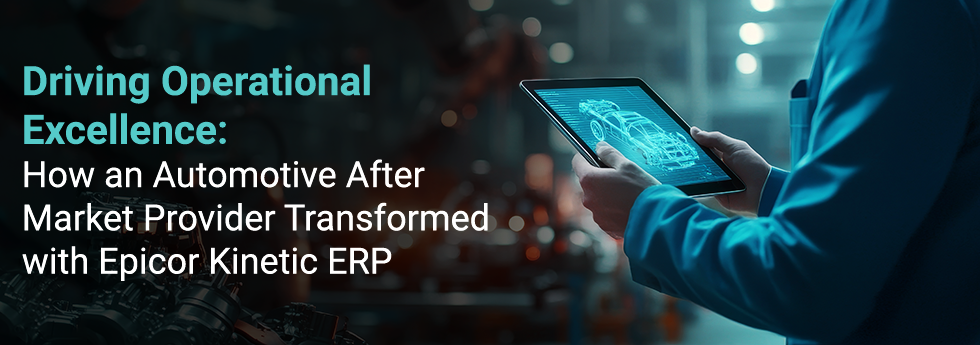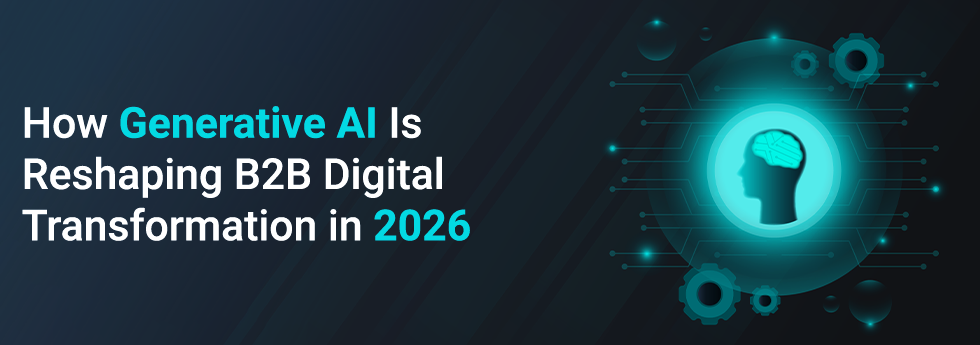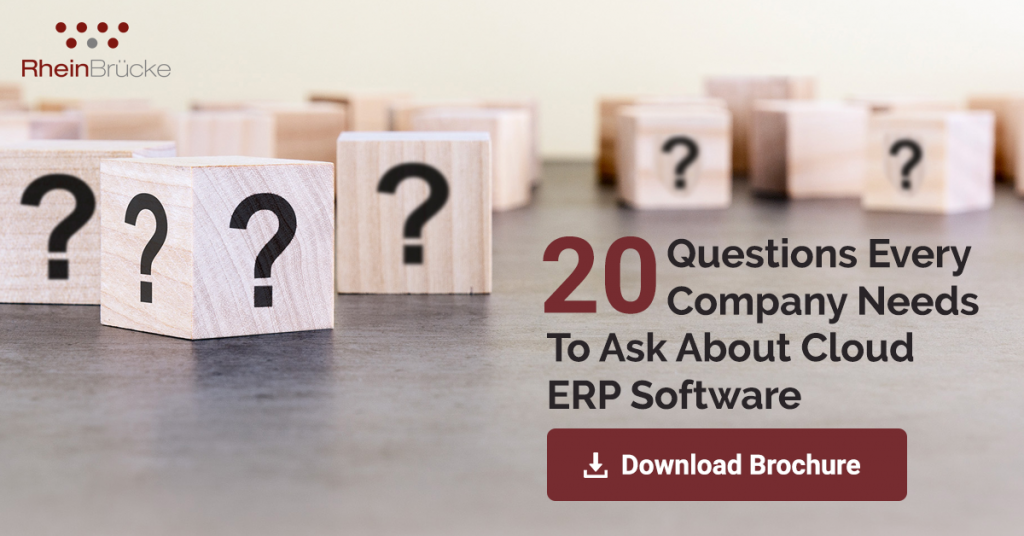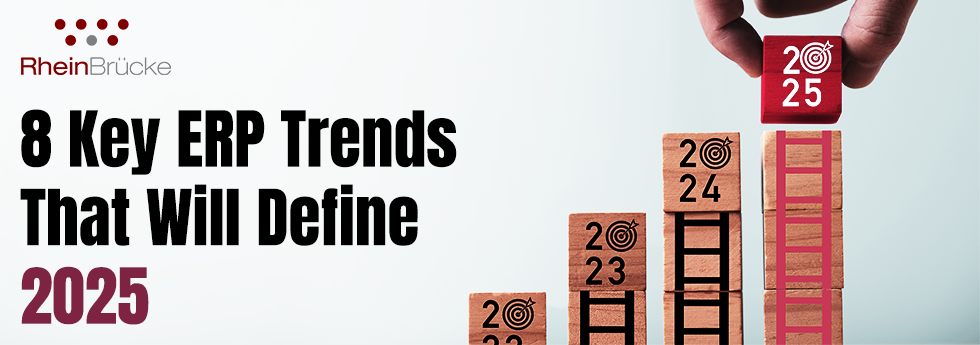
The world of Enterprise Resource Planning (ERP) is rapidly evolving, with a clear shift towards more human-centric, adaptable, and intelligent systems. Moving beyond basic automation and cloud adoption, the key trends shaping the next phase of ERP innovation revolve around user experience, a unified approach to the evolving workforce integration, enhanced composability with low-code customization and deeper insights and a growing focus on resilience and localization. Companies that adapt to these shifts will stay ahead, while those relying on outdated systems risk falling behind. Let’s explore the eight ERP trends set to redefine business operations in 2025.
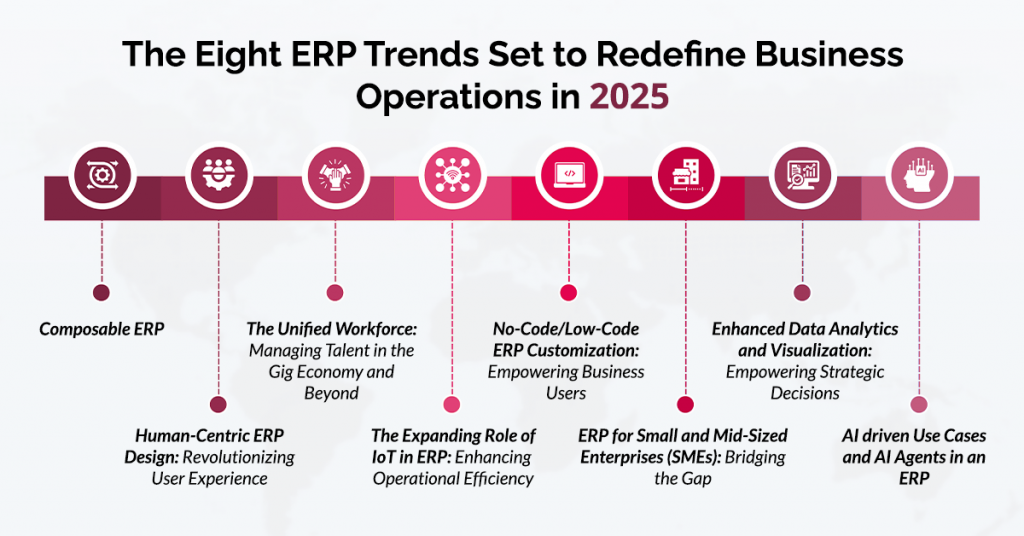
![]() Composable ERP
Composable ERP
Composable ERP is crucial for today’s business trends, offering flexibility and scalability to meet the demands of a rapidly changing market. Unlike traditional ERP systems, composable ERP allows businesses to select and integrate only the micro-services they need, ensuring cost-efficiency and agility. As AI, cloud computing, and real-time data analytics transform industries, composable ERP enables seamless integration of these technologies, driving innovation. This adaptability ensures businesses can scale quickly, respond to disruptions, and continuously evolve to maintain a competitive edge in an unpredictable environment.
![]() Human-Centric ERP Design: Revolutionizing User Experience
Human-Centric ERP Design: Revolutionizing User Experience
For years, ERP systems have been synonymous with complex interfaces and cumbersome navigation. That’s beginning to change rapidly as ERP vendors evolve. ERP vendors are prioritizing a sleek, intuitive user experience, focusing on mobile-first, consumer-grade interfaces. Expect cleaner UI/UX designs and more personalized features that allow users to tailor their experience. Integrating voice assistants and AI-powered recommendations will further enhance workflow simplicity, making ERP systems easier to use and increasing employee engagement.
![]() The Unified Workforce: Managing Talent in the Gig Economy and Beyond
The Unified Workforce: Managing Talent in the Gig Economy and Beyond
Future ERP systems are adapting to provide a unified platform for managing a diverse mix of permanent employees, freelancers, contractors, and remote workers. This includes robust tools to support the gig economy with seamless tax compliance and labor regulations, alongside features for tracking the skills of all workers, identifying talent gaps, and optimizing workforce allocation based on project requirements and business goals. Real-time analytics will provide a comprehensive view of productivity and costs across the entire workforce, enabling smarter, data-driven decisions.
![]() The Expanding Role of IoT in ERP: Enhancing Operational Efficiency
The Expanding Role of IoT in ERP: Enhancing Operational Efficiency
The integration of Internet of Things (IoT) technology into ERP systems is transforming industries, especially in manufacturing. Real-time data from IoT sensors will be fed directly into ERP systems, offering business leaders unprecedented visibility into operations. This integration will streamline production, improve quality control, and optimize decision-making processes. In industries like supply chain management, asset tracking, and predictive maintenance, IoT-enabled ERP will reduce costs and increase efficiency.

![]() No-Code/Low-Code ERP Customization: Empowering Business Users
No-Code/Low-Code ERP Customization: Empowering Business Users
Customization in ERP systems used to be expensive and time-consuming. However, the rise of no-code and low-code platforms is revolutionizing ERP customization by allowing businesses to modify workflows, build custom modules, and automate processes—no coding experience required. These platforms enable non-technical users to implement changes in real-time, drastically reducing development cycles and dependence on IT departments and increasing agility in responding to local market needs.
![]() ERP for Small and Mid-Sized Enterprises (SMEs): Bridging the Gap
ERP for Small and Mid-Sized Enterprises (SMEs): Bridging the Gap
ERP systems have long been associated with large enterprises, but by 2025, lightweight, affordable, and industry-specific ERP solutions for small and mid-sized businesses (SMEs) are becoming increasingly prevalent, especially cloud-based options. This provides smaller businesses around the world access to powerful tools, leveling the playing field and driving growth in the SME sector on a global scale.
![]() Enhanced Data Analytics and Visualization: Empowering Strategic Decisions
Enhanced Data Analytics and Visualization: Empowering Strategic Decisions
Advanced data analytics, including AI-powered insights, will play an even more pivotal role in future ERP systems globally, providing actionable recommendations to optimize costs, improve customer experience (considering diverse cultural preferences), and enhance overall business performance in competitive international markets.
![]() AI driven Use Cases and AI Agents in an ERP
AI driven Use Cases and AI Agents in an ERP
Furthermore, by 2025, AI-driven ERP offerings like Epicor Prism will be crucial for business success, enhancing operational efficiency and driving digital transformation. As artificial intelligence evolves, businesses will rely more on AI-powered ERP solutions to automate workflows, optimize decision-making, and improve both customer and employee experiences. The seamless integration of AI with emerging technologies will enable businesses to adapt quickly to changes, improve data analytics, and stay competitive in a rapidly changing market. In 2025, AI in ERP will no longer be just a trend, but a core component of business agility and growth
The Bottom Line: The Future of ERP is Adaptability, Intelligence, and Global Relevance
In 2025 and beyond, ERP systems won’t just be about automation and AI—they’ll be about adaptability, user experience, and inclusivity. Businesses that embrace these ERP trends will have a competitive edge, staying agile as the landscape continues to evolve. Businesses worldwide that strategically embrace these eight trends will be best positioned for sustained growth and success in an increasingly interconnected world.
What are your thoughts on these evolving ERP trends? How do you see them impact businesses globally and within your industry? Share your perspectives in the comments below!


